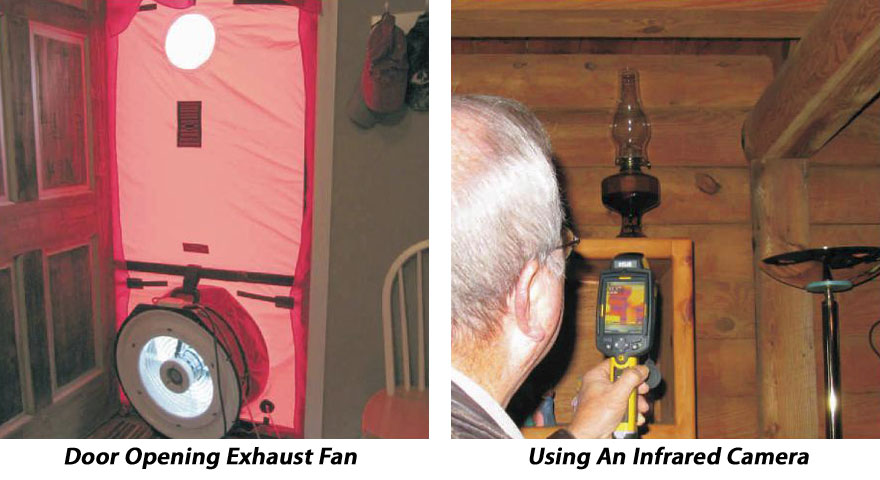Whenever the outside temperature is at least 20 degrees lower than the temperature within a home it's a good time to find any gaps that may be leaking air. All you’ll need is a small pail of warm water, a piece of chalk and a perhaps a ladder depending on how high the ceilings are. If you dip your hand in the water then run your wet hand over the interior walls keeping it about six inches to a foot away from the surface, you will easily feel any cold air leaks that are coming through the walls or around the windows. As you move your wet hand closer to the wall you can pretty well pin-point where the leak is located. Be sure to mark those leaking areas with the chalk.
If you have a box fan and want an even more efficient method of locating leaks, place the fan in a window or door blowing outward and cover the remaining opening with plastic sheeting. This will help draw cold air into the home through the leaks making them easier to find.
A more accurate and sophisticated method of locating air leaks is with the use of an infrared camera. They are somewhat expensive, but there are people who specialize in doing energy evaluations of homes using this type of equipment.

The best way to attack air leaks is from exterior surfaces. Interior walls can be caulked but if a crack or crevice is leaking air it may also leak water. Sealing the leak from the outside prevents water penetration along with air infiltration. Sealing with Energy Seal™ can be accomplished in cold weather as long as the temperature is above 40° F, and the wood is not wet or frozen. However, the pails or tubes of sealant should be stored in a heated area until they are used.
Maintenance caulking is really a two person job, one outside doing the sealing and one inside feeling for the leaks. Finding the outside source of the leak may not be as easy as it sounds, especially around window and door frames. The opening source of the leak may be several inches from the spot where it is felt inside the home. It's just a matter of continuing to seal the area until the person on the inside no longer detects the air leak.
